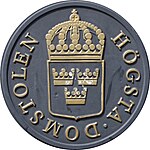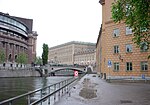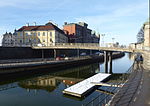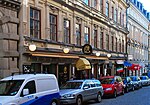Bonde Palace
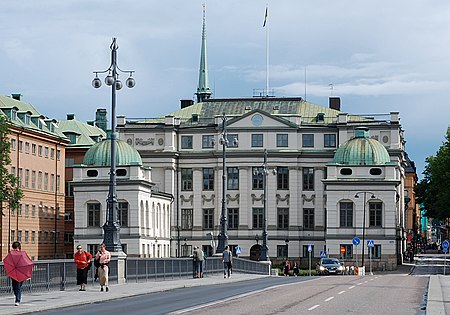
The Bonde Palace (Swedish: Bondeska palatset) is a palace in Gamla stan, the old town in central Stockholm, Sweden. Located between the House of Knights (Riddarhuset) and the Chancellery House (Kanslihuset), it is, arguably, the most prominent monument of the era of the Swedish Empire (1611–1718), originally design by Nicodemus Tessin the Elder and Jean De la Vallée in 1662-1667 as the private residence of the Lord High Treasurer Gustaf Bonde (1620–1667) it still bears his name, while it accommodated the Stockholm Court House from the 18th century and since 1949 houses the Swedish Supreme Court. On the south side of the building is the street Myntgatan and the square Riddarhustorget, while the alleys Riddarhusgränd and Rådhusgränd are passing on its western and eastern sides.
Excerpt from the Wikipedia article Bonde Palace (License: CC BY-SA 3.0, Authors, Images).Bonde Palace
Rådhusgränd, Stockholm Gamla stan (Södermalms stadsdelsområde)
Geographical coordinates (GPS) Address External links Nearby Places Show on map
Geographical coordinates (GPS)
| Latitude | Longitude |
|---|---|
| N 59.326111111111 ° | E 18.066388888889 ° |
Address
Bondeska palatset
Rådhusgränd
111 28 Stockholm, Gamla stan (Södermalms stadsdelsområde)
Sweden
Open on Google Maps
